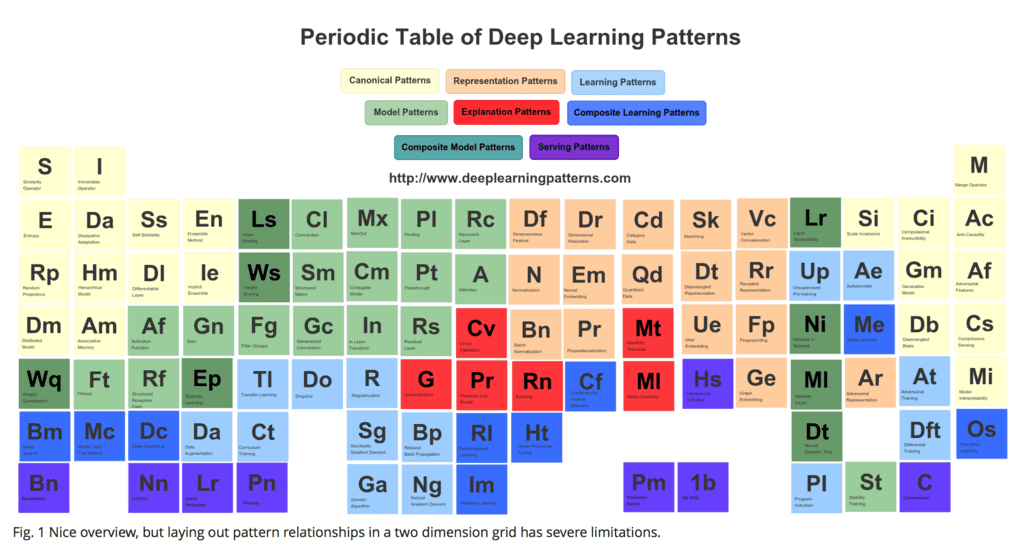This article comes from Deep Learning Patterns.

Note to reader: Diving into this material here can be a bit overwhelming. One way though to get an understanding of the thought process is to follow the Intuition Machine blog.
Deep Learning Architecture can be described as a new method or style of building machine learning systems. Deep Learning is more than likely to lead to more advanced forms of artificial intelligence. The evidence for this is in the sheer number of breakthroughs that had occurred since the beginning of this decade. There is a new found optimism in the air and we are now again in a new AI spring. Unfortunately, the current state of deep learning appears too many ways to be akin to alchemy. Everybody seems to have their own black-magic methods of designing architectures. The field thus needs to move forward and strive towards chemistry, or perhaps even a periodic table for deep learning. Although deep learning is still in its early infancy of development, this book strives towards some kind of unification of the ideas in deep learning. It leverages a method of description called pattern languages.
Pattern Languages are languages derived from entities called patterns that when combined form solutions to complex problems. Each pattern describes a problem and offers alternative solutions. Pattern languages are a way of expressing complex solutions that were derived from experience. The benefit of an improved language of expression is that other practitioners are able to gain a much better understanding of the complex subject as well as a better way of expressing a solution to problems.
The majority of literature in the computer science field, the phrase “design patterns” is used rather than “pattern language”. We purposely use “pattern language” to reflect that the field of Deep Learning is a nascent, but rapidly evolving, field that is not as mature as other topics in computer science. There are patterns that we describe that are not actually patterns, but rather may be fundamental. We are never certain which will are truly fundamental and only further exploration and elucidation can bring about a common consensus in the field. Perhaps in the future, a true design patterns book will arise as a reflection of the maturity of this field.
To read more, click here.
DSC Resources
- Free Book: Applied Stochastic Processes
- Comprehensive Repository of Data Science and ML Resources
- Advanced Machine Learning with Basic Excel
- Difference between ML, Data Science, AI, Deep Learning, and Statistics
- Selected Business Analytics, Data Science and ML articles
- Hire a Data Scientist | Search DSC | Classifieds | Find a Job
- Post a Blog | Forum Questions
